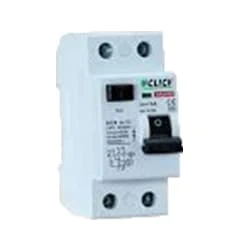Timer contactor wiring diagram:
This circuit diagram shows the Timer contactor wiring diagram. Digital timer switch wiring diagram. In this circuit, we use a DP MCB ( Double Pole Minature Circuit Breaker ), an RCCB, a contactor, a timer, and an emergency switch. This circuit is very simple and easy to make. If you want to know more about this circuit please check our youtube video below the post. For more learning please stay with us.
Diagram of timer switch wiring:
Components Need for this Project:
You can get the components from any of the sites below:
- Timer [See Buy Click Amazon]
- RCCB [See Buy Click Amazon]
- DP MCB [See Buy Click Amazon]
- Contactor [See Buy Click Amazon]
- Stop Switch [See Buy Click Amazon]
Read Also:
Components used to make the Contactor wiring:
01. Timer
 |
| Fig 2: Timer |
Timer is a specialized type of clock used for measuring specific time intervals.An electromechanical cam timer uses a small synchronous AC motor turning a cam against a comb of switch contacts. This type of timer often has a friction clutch between the gear train and the cam, the cam can be turned to reset the time.A simple example of the first type is an hourglass. Working method timers have two main groups: hardware and software timers.Most timers give an indication that the time interval that had been set has expired.
02. RCCB
 |
| Fig 3: RCCB |
The RCCB (Residual Current Circuit Breaker) or RCCB is an electrical protective device.Residual Current Circuit Breaker is specially designed to protect the electrical circuit against earth fault and human from electrical shock.In this, under normal condition the load is always connected in between the phase terminal to neutral terminal, hence the flow of phase current is equal to neutral current.Earth fault or fault in a power system can cause excess heating, more power consumption, burning or fire, etc. So, protection against earth leakage is very important.
03. DP MCB
 |
| Fig 4: DP MCB |
Double pole MCB can control two wires. This circuit breaker is generally used in single-phase electric lines. Double pole MCB circuit breaker input has two wires supply two wires and an output. In a single-phase line, A double-pole MCB circuit breaker is used to give good production. This circuit breaker is provided through phase and neutral circuit breaker, it is very safe. This circuit breaker is preferred for home appliances. A DP MCB usually trips for 2 reasons 1. Overload 2. Short circuit.
04. Contactor
 |
| Fig 5: Contactor |
A magnetic contactor is an electrical device used for load control, automation, and protection. It is much like a magnetic reel. However, relays are generally used for low power and voltage, on the other hand, when we think of high power, these heavy-duty contractors only come to mind. It basically works by switching the load on and off. It has 3 terminals whose inputs are denoted as L1, L2, L3, and outputs as T1, T2, and T3. The circuit of the load is made in automation mode or protection using auxiliary contacts. It has two types of terminals. 1) Normally Open (NO). 2) Normally Closed (NC)
05. Stop Switch
 |
| Fig 6: Stop Switch |
An Emergency Stop Switch is a Safety Mechanism Used to Shut off Machinery in an Emergency When it Cannot be Shut Down in The Usual Manner. The Purpose of an Emergency Push Button is to Stop The Machinery Quickly When There is a Risk of injury or The Workflow Requires Stopping. Machinery And Equipment Used in Factories and Other Facilities are Equipped With an Emergency Stop Function to Stop The Machinery And Equipment in an Emergency to Ensuring Operator Safety as Complementary protective measures.
Thank You for visiting the website. Keep visiting for more Updates.


Post a Comment
Do leave your comments